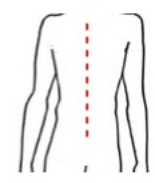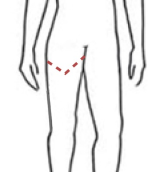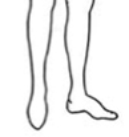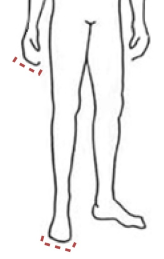-
Hair Category
Question 1
Everyone has one Homebase, either a SPRING, SUMMER, AUTUMN OR WINTER. If you had to choose one of the following Homebases, choose the one that is closest to the color of your natural hair color in your prime or teenage years — otherwise, not gray or artificially colored.
Important: Judge by roots of hair, not by sun-bleached ends -
Hair Color in Harmonic Sequence
Question 2
Choose the colored hair section closest to your hair color.

-
Hair Color Names
Question 3
Check the box for each item that describes the color of your hair; if undecided mark both.
(Go by the hair color near the roots, not the sun-bleached ends)
-
Eye Color
Question 4
Choose the colored eye section closest to your eye color.

-
Eye Colors in Harmonic Sequence
Question 5
In this eye-color display, choose the section in which your eye colors are most represented.

-
Eye Color Names
Question 6
Fine-tune by checking every trait which describes your eyes.
-
Skin Characteristics
Question 7
Check every trait that describes your skin characteristics.
-
Hair Characteristics
Question 8
Check every trait for each characteristic of your hair.
-
Eyebrows and lashes
Question 9
Check each characteristic that applies to you.
-
Head and neck
Question 10
Read the description that best describes your head and neck.

Oval head is shaped more like an egg; oval on top. The oval neck is medium in length.

Round head is shaped more like a ball. The circle neck is shorter than the oval neck.

Square head is shaped more like a box; flatter planes; shorter neck.
Rectangle head and neck is less wide and longer.

Triangle head can be wide at top and narrow at jaw or vice-versa. The triangle neck is longer, or appears longer if jaw line is angled down to V.
-
Shoulders
Question 11
Read the descriptions and choose the category which best describes your shoulders.

Shoulders sloped with smooth angle at base of neck and at shoulder points.

Shoulders extra muscle at base of neck and rounder shoulder points.

Shoulders more square and straight across, square angle at neck and shoulder points.

Shoulders straighter across and broad in proportion to small waist.
Type 2 appears very broad.
-
Rib cage
Question 12
Read the descriptions and choose the category which best describes your rib cage. Notice that even breast muscles on men are shaped differently according to body type.

Ribcage more ovular than boxy.

Ribcage is rounder and somewhat thicker.

Ribcage more straight up and down; thicker.
Rectangle is less thick and longer.

Ribcage V-shaped (easily seen from the back view.)
Also valid for Type 2 but V-shaped down to thighs.
-
Waist
Question 13
Read the descriptions and choose the category which best describes your waist.

Waist medium, smooth flowing oval curve.

Waist smaller but tends to disappear with weight gain.

Waist has less indention, "short waisted."
Rectangle is longer waisted.

Waist small in proportion to hip and shoulder.
Inverted triangle lines.
-
Hipbones
Question 14
Read the descriptions and choose the category which best describes your hipbones.

Top of hip is 2" lower than actual waistline.

Top of hip is 1½-2" lower than actual waistline.

Hipbone set high right at waistline.

Hipbone set high right at the waistline.
-
Back
Question 15
Read the descriptions and choose the category which best describes your back.

Back is slightly cylindrical from the side view.

Back is fuller, bit more rounded, not as straight.

Back is flat and straight.

Back is straight.
-
Thighs
Question 16
Read the descriptions and choose the category which best describes your thighs.

Thighs have oval curve, have definite dip at side halfway between hipbone and thigh.

Thighs slight dip with rounded curve.

Thighs flat back and sides; no curves or dips.

Type 1 angles out to fuller thigh area.
Type 2 “The Lion” has broad fuller chest and back which angle down to narrow tapered hips.
-
Derriere
Question 17
Read the descriptions and choose the category which best describes your derriere.

Derriere has overall oval shape.

Derriere has rounder fuller shape.

Derriere flatter, more straight down.

Type 1 angles in from sides forming a fuller derriere at center back.
Type 2 has a flatter derriere as part of the inverted triangle shape from hip downward.
-
Arms
Question 18
Read the descriptions and choose the category which best describes your arms.

Arms have gradual smooth oval line.

Arms are curved, a bit fuller and round, not as straight; distinctive round fleshy spot on upper outer arm.

Arm lines are less curved and are more straight and trim.

Arms have straight taper to elbow and wrist.
-
Legs
Question 19
Read the descriptions and choose the category which best describes your legs.

Legs have gradually shaped oval line to ankle.

Legs have some curve to legs; round line can add fullness to calves.

Slim hips make nice leg line; Square body type legs are more stocky.

Legs have straighter angled leg line; not curvy.
-
Ankles
Question 20
Read the descriptions and choose the category which best describes your ankles.

Ankles medium but accentuated by oval curve, appear slim.

Leg curves down accentuating slim ankle.

Ankles are stocky type medium in size.
Rectangle has slimmer ankles.

Full lower leg and ankle; no curve.
Both types, no curve.
-
Hands and feet
Question 21
Read the descriptions and choose the category which best describes your hands and feet.

Fingers and toes more oval shaped; longer, longer vamp on foot, oval shape fingernails.

Ends of fingers and toes are rounder, rounder palms and ball of foot, shorter vamp, fingernails are more rounded.

Palms and balls of feet more square-shaped.
Rectangle tall type more long and rectangular.

Ends of fingers and toes immediately taper down to form angles; fingers are more tapered; high instep.
-
Thanks for participating!
Here are your results
Colors
Spring Summer Autumn Winter Soft balanced Intense balanced Body
Answer Body questions againOval Circle Square Rectangle Triangle Inverted triangle
Start Color questions over again
The benefit of this color and body analysis is that you will know exactly where you fit into the scheme of things as you study The Science of Dress. The fully illustrated work allows you to see and pinpoint what is relevant to you personally. The concepts are presented so that one learns by comparison and understands what, why and how to apply universal principles to his or her dress. The 5 books address various levels of information from short succinct versions to a complete in-depth study depending upon your interest and scope of intention for self-knowledge. See www.thescienceofpersonaldress.com.



